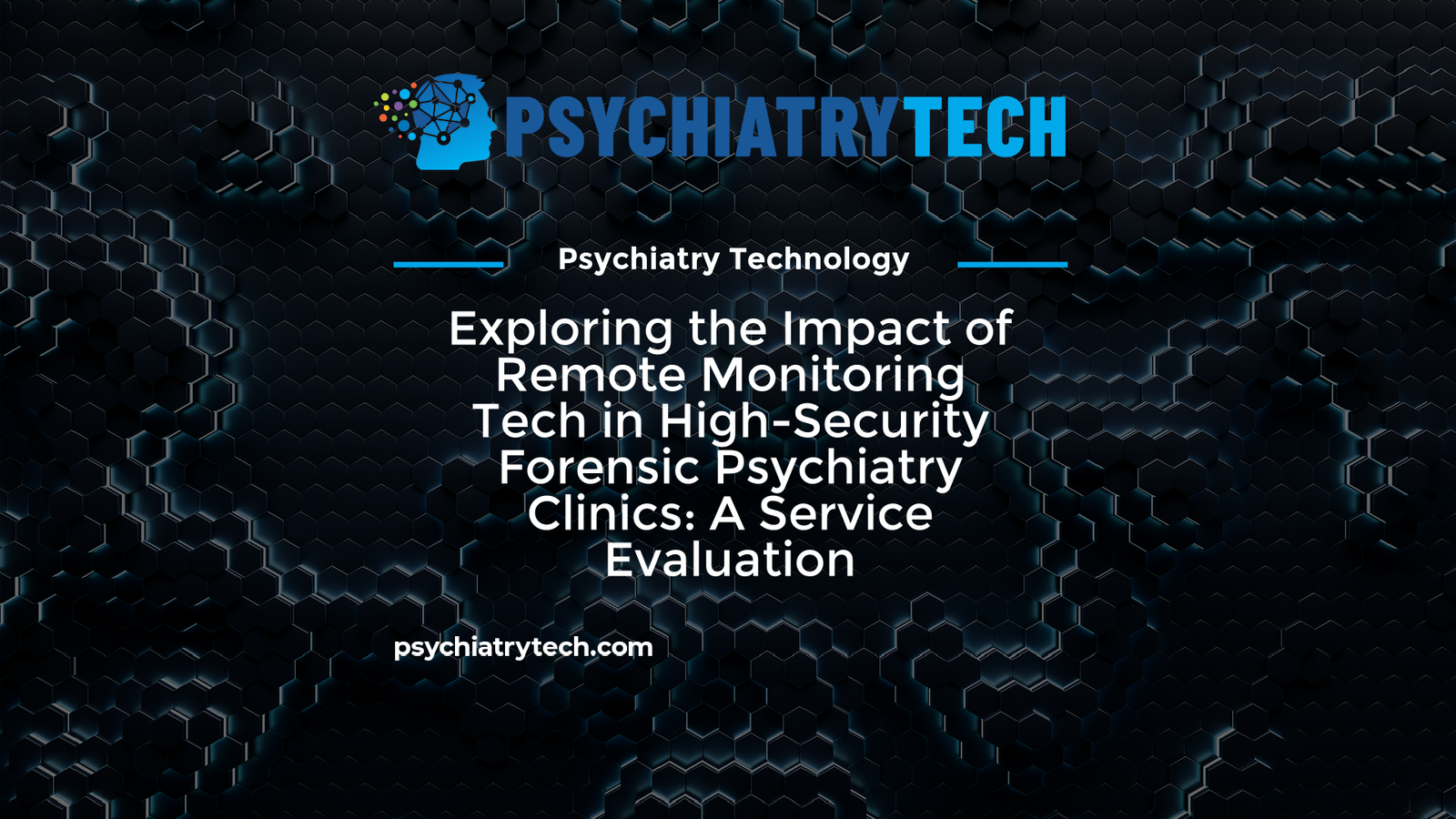Exploring the Impact of Remote Monitoring Tech in High-Security Forensic Psychiatry Clinics: A Service Evaluation
In recent years, remote monitoring technology has garnered significant attention in the healthcare industry. In particular, this technology has been used to remotely collect data and monitor patients in psychiatric settings. A recent study, published in BMC Psychiatry, sought to evaluate the effectiveness of remote monitoring technology in high-security forensic psychiatry clinics. The study aimed to examine whether remote monitoring technology could improve the quality of care and enhance the safety and management of patients in these settings.

Discover The World's MOST COMPREHENSIVE Mental Health Assessment Platform
Efficiently assess your patients for 80+ possible conditions with a single dynamic, intuitive mental health assessment. As low as $12 per patient per year.
Understanding Forensic Psychiatry Clinics
Forensic psychiatry clinics, also known as secure psychiatric hospitals or units, are specialized institutions that provide long-term care and treatment for patients who have committed criminal offenses. These individuals may have been diagnosed with severe mental health conditions, such as schizophrenia or bipolar disorder, that require ongoing psychiatric care. In high-security forensic psychiatry clinics, staff members are responsible for ensuring the safety of both patients and the general public. This includes managing patients who may exhibit aggressive or violent behaviors.
Remote Monitoring Technology
Remote monitoring technology involves the use of sensors and wearable devices to collect data on patients’ physical and mental health, including vital signs, sleep patterns, and activity levels. This data is transmitted to healthcare providers who can then use it to monitor patients’ health and manage their care remotely. In the context of forensic psychiatry clinics, remote monitoring technology can potentially improve patient safety by enabling staff members to identify and respond to warning signs of aggressive behavior or other issues before they escalate.
The Study
Over the course of six months, the study evaluated the implementation of remote monitoring technology at a high-security forensic psychiatry clinic in the United Kingdom. The study involved 27 patients, all of whom had agreed to participate in the monitoring program. Patients were outfitted with wearable devices that collected data on their vital signs, activity levels, and sleep patterns. This data was transmitted wirelessly to a secure server, which was monitored by clinical staff members.
The results of the study were largely positive. According to the study authors, remote monitoring technology improved the quality of care and enabled staff members to better manage patient safety. The technology also helped to optimize staff members’ workload and reduce the strain on resources. The study noted that the use of remote monitoring technology allowed staff members to identify early signs of patients’ mental health declining, identify changes in their physical health, and quickly respond to patients who required assistance. Patients themselves reported that they felt more involved in their own care and that the monitoring encouraged them to take better care of themselves.
Implications for the Future
The findings of this study suggest that remote monitoring technology has significant potential to improve the quality of care and enhance patient safety in high-security forensic psychiatry clinics. Remote monitoring technology can help staff members to manage patients more effectively and efficiently, and it can also provide patients with a greater sense of control over their own care. As remote monitoring technology continues to evolve and become more widely available, it is likely that we will see it being used more frequently in healthcare settings.
However, it is also important to note that remote monitoring technology is not a panacea and there are limitations to its effectiveness. For instance, some patients may be resistant to wearing the monitoring devices or may not have access to reliable wireless connectivity. Additionally, there are privacy concerns associated with the monitoring of patients’ physical and mental health data. As such, the use of remote monitoring technology must be carefully evaluated on a case-by-case basis to ensure that it is being used in the best interests of both patients and staff members.
Conclusion
In conclusion, the use of remote monitoring technology in high-security forensic psychiatry clinics appears to have significant potential to improve patient safety and the quality of care. Remote monitoring technology can enable staff members to more effectively manage patients’ care and provide patients with a greater sense of control over their own health. As such, it is likely that we will see more healthcare providers implementing remote monitoring technology in the coming years. It is important, however, that such efforts are grounded in careful evaluation and consideration of the potential benefits and limitations of this technology.
Question for Discussion
What do you think are some of the major challenges that healthcare providers will face as they work to implement remote monitoring technology in psychiatric settings? How can these challenges be addressed?

